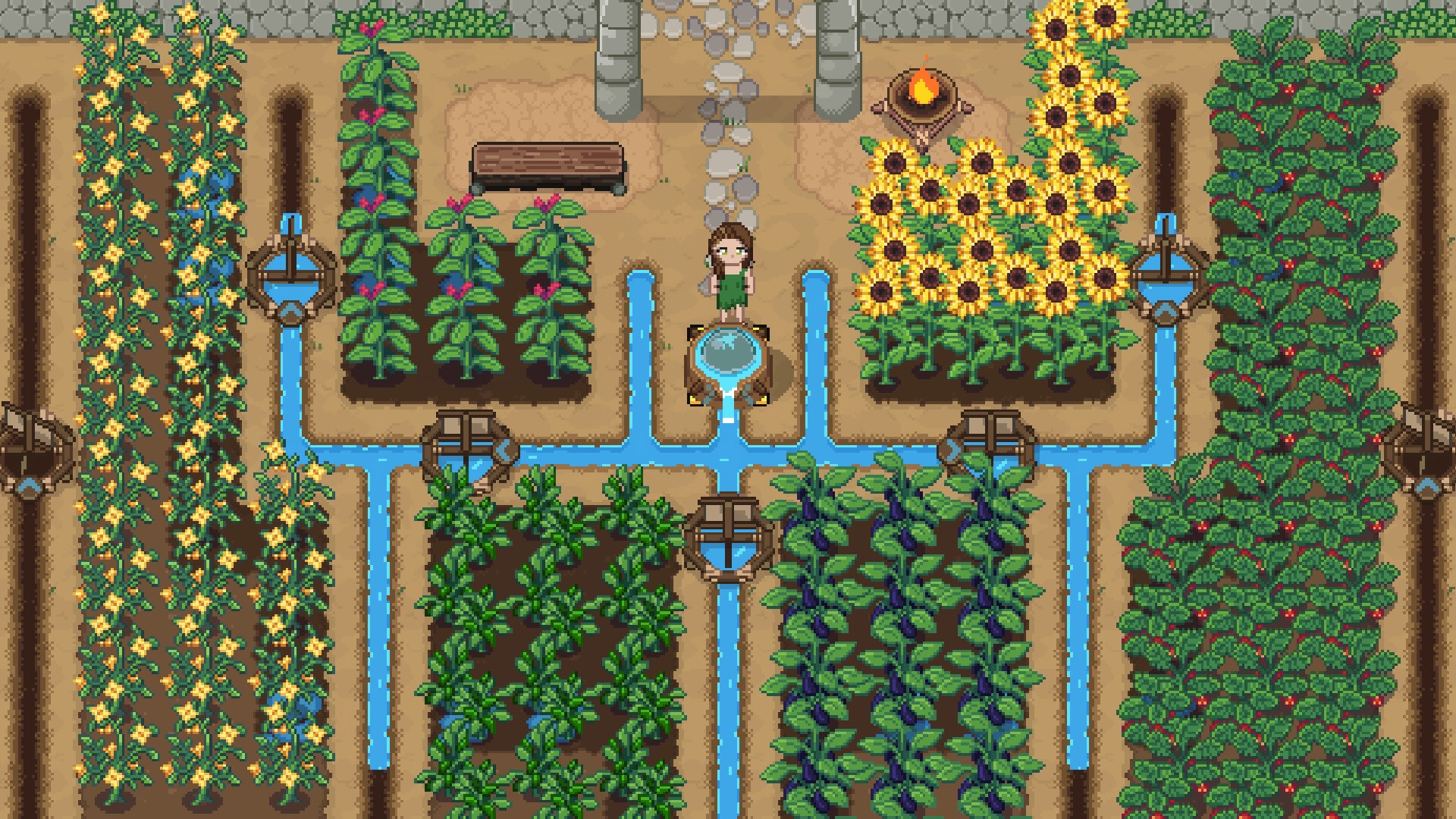
After my first spring in Roots of Pacha, I'm as hooked on playing "just one more day" as I ever was in Stardew.
Stone age farming and town sim Roots of Pacha looks shockingly like Stardew Valley right off the bat—from the proportions of its characters to its color palette. And it sounds just like Stardew too. The plip plop sound that logs make as I gather them, the whoop of picking crops, even some of its soundtrack melodies seem right out of Pelican Town. Though after playing through my first spring, Roots of Pacha doesn’t feel like a cheap imitation—it’s a very studied emulation that quickly starts throwing its own new ideas into the mix.
I don’t want to dwell too long on the concepts Pacha has parallelled from Stardew; you can pretty safely assume that if Stardew has it, so does Pacha (except for combat, sorry) but here’s a quick rundown:
(Image credit: Soda Den)
Farming, fishing, animal ranching, friendship meters, and cookingSeasonal crops and tools for refining them into juice, oil, and other byproductsFestivals and minigames throughout the yearRomances and marriage with villagers, cutscenes as you grow closerAn overarching list of goals (prophecies rather than a community center)Customization with clothes, furniture, and farm plots to design as you pleaseCo-op for four playersThat one scruffy, standoffish love interest that I know the Shane lovers will choose
For those looking for a supplementary Stardew, this is easily the closest one I’ve played in years. But true to its themes of societal development, Pacha evolves past the blueprint that it so carefully followed.
Instead of selling your goods to the insatiable shipping bin, you’ll donate your crops and products to the community itself, raising the entire clan’s “prosperity” while also paying into your own wallet of “contributions.” Your personal contribution total is what you’ll use to trade goods directly with other villagers, buying furniture or tools, for instance, while the overall prosperity of the Pachans is the gate for new discoveries.
(Image credit: Soda Den)
Every couple days your fellow Pachans will have bright ideas on how to improve your life, starting off with one inventing a well for you to refill your watering skin in if you bring her 20 stones. This later gets more complex: another comes up with a juice press if you can drum up wood, stone, and tomatoes. Initially the Pachans don’t have any timekeeping system, so I’ve got to keep an eye on the position of the sun in my HUD, but after we invent a sundial I’ve got a handy standard clock up there too. This sidestep from Stardew Valley’s longer community center goals gives me immediate rewards and a steady string of efficiency to chase.
Pacha also really doubles down on the minigames with fishing and mount racing, though I think the low-key rhythm game on my flute is what’s brought me the greatest joy. It takes a few days to make any wild animal trust me by timing my button press to the beat of the song unique to its species. Discovering the giant mammoths in the plains to the west was a treat, made better by pulling out my flute and hearing what song I’d be playing for them.
(Image credit: Soda Den)
After my first 28 in-game days with Roots of Pacha I haven’t even gotten to pottery painting, the full band rhythm game, designing my irrigation system, or breeding new generations of my livestock with better stats, so I feel pretty confident that it’s going to keep me constantly chasing these new activities.
Other similarities aside, the most important part of Stardew Valley’s excellence that Pacha effectively emulates is its pace. I’ve played a lot of Stardew Valley-alikes over the years since it launched and even the best games like Stardew Valley have a tendency to initially flounder by not keeping me busy or too quickly turn into an overwhelming grindfest. Pacha’s continuous flow of “idea” quests, explorable areas, and activities is expertly paced, making the irresistible pull of “just one more day” just as strong as Stardew’s.
Roots of Pacha launched this week on Steam and has a 10% discount until May 2.



